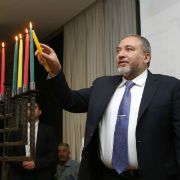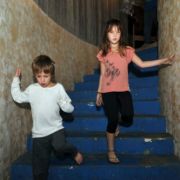What makes a hero?
“Judah the Maccabi, a hero and a man of valor since his youth, will lead you in a time of war.” (Book of the Maccabees)
Hanukkah’s undisputed hero is Judah Maccabee, the leader of the Jewish forces during the Hasmonean revolt. The Maccabees’ rebellion aimed to counter King Antiochus the Fourth’s decrees, which forbade Jews from practicing their religion, as well as the corresponding Hellenization of the Jewish people.
Judah was an outstanding strategist, and this was expressed in his actions: his exceptional management of the Maccabees’ military campaign, the ambushes and surprise attacks he planned against the enemy, his ability to capitalize on victory on the battlefield, and his unrelenting pursuit of the enemy until defeat.
Under Judah the Maccabee’s leadership, the rebel forces defeated the skilled and well-prepared Seleucid army, even though the rebels had fewer troops and weapons at their disposal. Thus, in the collective Jewish consciousness, Judah is a quintessential leader and admired military men—a true hero.
Though heroes abound, the quality of heroism is one of the most mysterious and complex elements of human culture. What we know is that it is related to overcoming fear or doubt at times of war, battle or other distress. Once a person displays this trait, he or she becomes the object of admiration and the main character in stories, songs, and tales. These narratives transmit the quality of heroism and the hero’s actions to the next generation—children who seek inspiration or a role model.
The Jewish people have long understood that heroism comes in many forms. This multiplicity is the focus of “Heros: Trailblazers of the Jewish people,” an exhibit now showing at Beit Hatfutsot- the Museum of the Jewish People, located on the Tel Aviv University campus. The exhibit aims to frame heroism in a new light and examines the options available to children who seek super-heroes with whom they can identify.
The exhibit features Jewish figures from different historical periods: scientists, philosophers, revolutionaries, cultural figures, athletes, and economic leaders. Each group demonstrates another side of heroism or bravery and draws on a different source of inspiration. The exhibit aims to encourage children and adults to think differently about heroism, heroes, admiration and idolization, and to present children with different perspectives on success. As such, the figures highlighted in the exhibit achieved success through courage and dared to think and act differently. The exhibit also showcases the unique way in which the Jewish people embraces a broad definition of success, which is not limited to physical strength or bravery on the battlefield. Moreover, special emphasis is given to Jewish cultural icons.
Among the 148 Jewish heroes featured in the exhibit are: Nobel laureate Ada Yonath, Albert Einstein, Maimonides, Dana International, Sarah Aharonson, Bob Dylan, Frank Gehry and many more. For details, visit the Museum’s website.
TAU students and staff receive a 50% discount on the cost of museum admission.
Photo: Beit Hatfutsot





